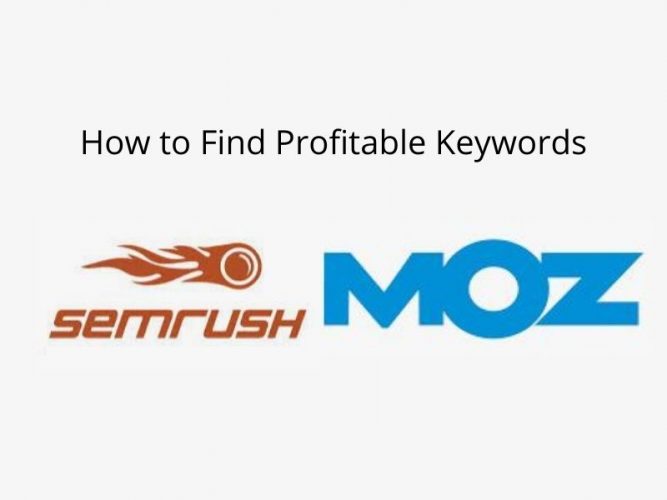Those who are working online such as, eCommerce businesses, blogging, amazon seller, and freelancers at marketplaces, all want to get profitable keywords. But very few people are getting it. That’s why those who are coming to blogging, amazon business, or marketplace and become failed. In this article, I will show you how to find profitable keywords.
Let’s jump into the deep:
How to do Keywords Research
Keywords research is the primary way to find a profitable keyword. SEO professionals all know about it, but very few of them can find the profitable one.
Most of SEO professionals do keywords research through tools such as Google’s keywords planners, Ahrefs, Semrush, All in One SEO, etc.
They collect the following data from the SEO tools:
- Search volume (SV)
- Keywords difficulty (KD)
- Search difficulty (SD)
- CPC
- Average number of backlinks of the top 10 search results
- Competitors analysis
These data can give the keywords that can drive traffic. Getting traffic and getting profit is not the same. For getting profit from your blog, eCommerce business, amazon business, etc. you need conversion. Though conversion keywords can drive low volume traffic. Without profitable keywords, you can’t succeed in online platforms.
Here I’m sharing my experience.
How to perform keyword research to generate revenue
Like any other process, keyword research involves a series of steps from start to finish. I have prepared a step-by-step guide to keyword research that generates income.
Understand user intent to match keywords with your goals
User intent is why someone searches for something on Google. What is he actually trying to get as a search result for that term?
Google now understands the user intent behind every search.
There are mainly 5 search intent types as follows:
- Search to buy something
- Search to learn something
- To go somewhere
- Find something
- Do something
For example, if you Google the term “apple”, you won’t see apples as a type of fruit in the search results. Instead, you’ll see websites related to Apple as a tech company or its most popular products.
Google understands that people are probably not looking for a type of fruit when they search for this keyword. Turns out people are researching Apple Inc. which is why you won’t see a lot of fruit in your SERP.
Or when you plug in ‘best Chinese’, Google understands your location and intention, so it will provide you with relevant results for the best places to eat Chinese food near you, instead of other related information.
The intention behind information requests is to find details on a specific topic. They are used when users want to know more about something.
For example, if you search the keywords “how to choose the best mountain bike” google will show you mountain bike-related blogs.
On the other hand if you Google “best mountain bike” you will get the results where you can buy a mountain bike.
So if you are an e-commerce site or selling mountain bikes online, your keywords should be “Best Mountain Bike”.
If you are running a blog for an amazon affiliate, your keywords should be “How to Choose the Best Mountain Bike”.
Generate seed keywords (topic ideas)
Generating seed keywords is an important part of the keywords research process. They are the heart of your target keywords.
The seed keywords (or main keywords) are usually one or two words and help define your industry or niche. They represent the theme of your website. It could be something like “oral care” for a dentist or “back pain” for a chiropractor or “SmartWatch” for an e-commerce business. Finding your seed keywords can be as easy and obvious as looking at your product and brainstorming ideas.
Find long-tail keywords with highest revenue potential
Unique or primary keywords are almost always incredibly competitive. Even though they get a lot of searches, but they are not good targeting choices. If you try to rank for these keywords, you would be competing with everyone else in that industry and even related industries elsewhere.
Even if you somehow manage to rank for these keywords, they won’t earn you any money. The users looking for them are usually in the awareness stage, so there isn’t a lot of earning potential for them.
Body keywords contain 2/3 words, such as “car insurance”, “health supplements” or “solar panel”. They also get a high search volume, but suffer from flaws similar to the main keywords; competition is huge and researchers are only in the early stages of the buying journey.
Instead, what you should be targeting are the longer keywords. These belong to the realm of long-tail keywords. They usually have more than 4 words.
Long-tail keywords should be much more specific such as “best mountain bike under $200”, or “best walking shoe under $100”, or “yoga mat for home use”, etc.
Long-tail keywords generate the highest ROI. They have the least competition and the people who use them for research know what they want and are much closer to the decision stage of the buyer’s journey.
Benefits of Long Tail Keywords
Long-tail keywords are ideal for the target audiences because:
- Low competition
- Closest to the search intent
- High conversion rate
- High ROI
Now the easiest way to get started with long-tail keyword discovery is to use Google Suggest. Just type in any of those seed keywords you have in Google and take a look at the suggested keywords.
It’s great because Google suggests these keywords based on the actual queries people are looking for.
There are tons of tools that can help you, some are paid, and some are free. Let me show you how you can do keyword research at no cost.
Semrush
Semrush is a complete SEO tool. Though it is a paid tool, you can also use a free plan and do keywords research. You will get 10 results in 24 hours with Semrush free plan. You have to sign-up first for using Semrush free plan.
I prefer Semrush’s free plan for keywords research for the new bees. Actually, I also use the Semrush free plan for finding the keywords.
You will get the following results from Semrush keywords research:
- Monthly search volume
- Country wise search volume
- Keywords difficulty
- CPC
- Number of search results in the SERP
- Relevant keywords
If you use Semrush for 5-6 research work, you can use this tool for a long time. But if you complete the quota (10) in 24 hours, you can’t use it for the next 24 hours.
MOZ
It is the most popular SEO tool in the world. Almost every SEO professionals use this tool at least once in their SEO career. It is a paid tool, but a free plan is also available. You have to sign-up first for using the free plan.
MOZ free plan includes 10 results in a month for keywords research, links explorer, and site overview.
You will get the following results from MOZ free plan keywords research:
- Keywords search volume
- Organic CTR
- Keywords difficulty
- Relevant keywords
- Top 3 SERP ranking
End Words
So, you have already understood how to find profitable keywords. Here are the final points for finding good and profitable keywords.
The keywords should be a low difficulty (KD 0-25)
Keywords search volume around 1000 monthly
The CPC of the keyword should be $5 to above
CTR of the keyword should be 20% to above
SERP pages should be below 10 million
The keywords should be long tail
Related Articles





